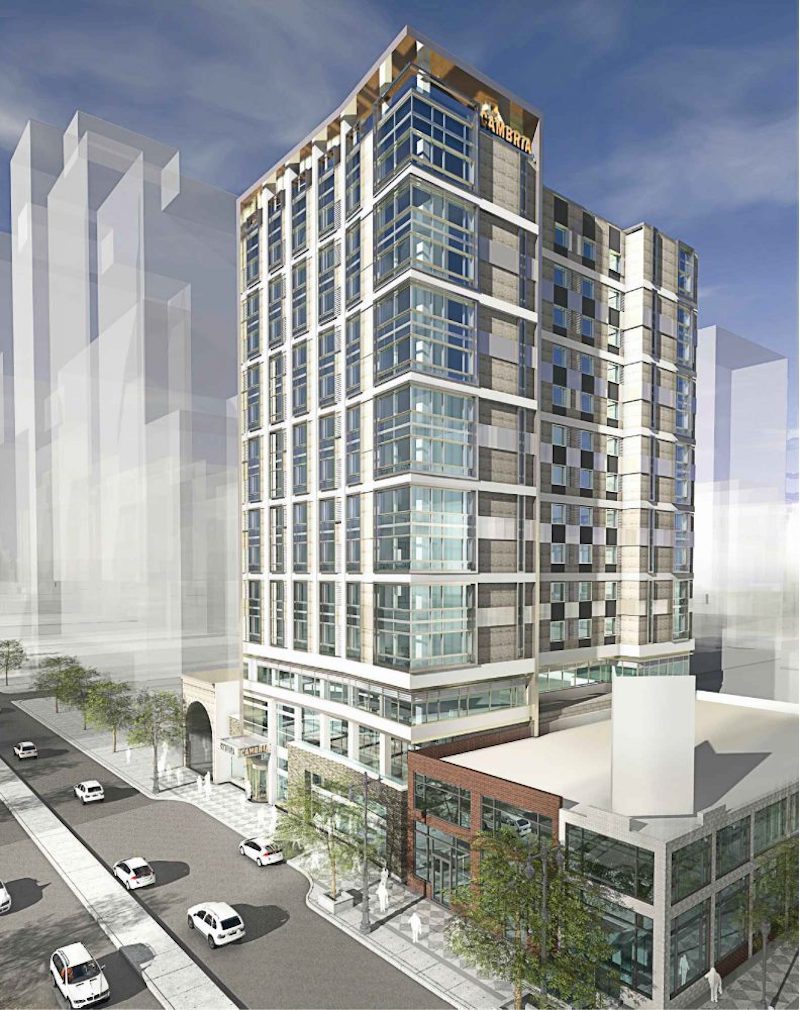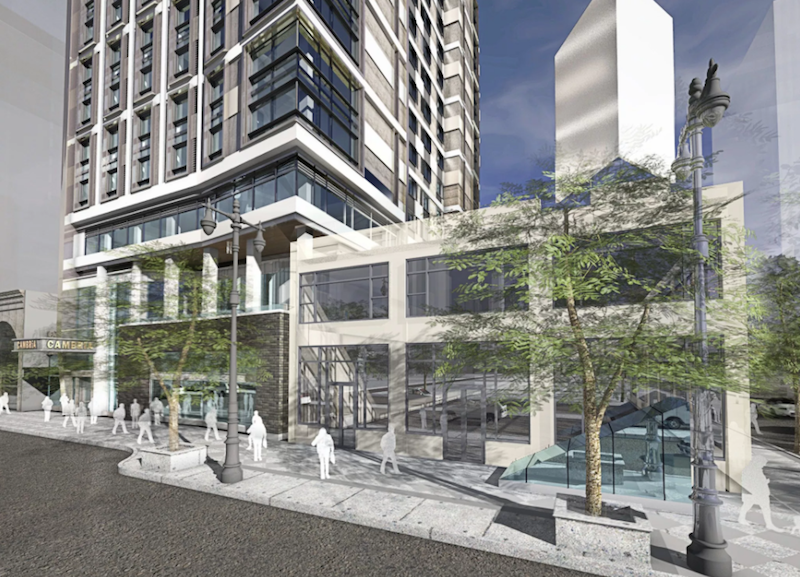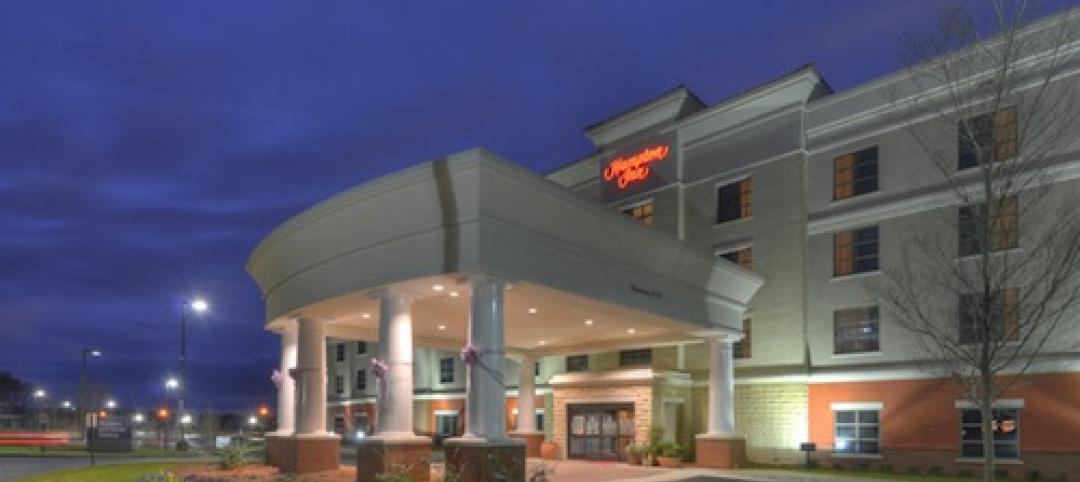The Cambria Hotel on South Broad Street is now open for business in Center City, Philadelphia. The 15-story, 174,000-sf hotel brings 223 guest rooms to the Pennsylvania city.
A two-story entry with a sculptural staircase that leads to the main lobby and a restaurant space greets guests upon entering the hotel. Additional amenities include a boardroom for small meetings, a 2,500-sf multi-function meeting space, and a fitness center. Attico, a 3,000-sf rooftop restaurant will be the largest rooftop restaurant and bar on Broad Street. Additionally, a Del Frisco’s Grille will be opened on the ground floor in October 2018.
 Rendering courtesy of DAS Architects.
Rendering courtesy of DAS Architects.
During the demolition and excavation of the parking garage that previously occupied the space, a two-level basement, a boiler plant, and concourse tunnels that connected to the subway system were discovered, belonging to what was once part of an 1800s office building. The basement and tunnels needed to be covered over with the construction of the new garage, so in order to proceed, the existing cavities had to be circumvented by threading new caissons around the abandoned tunnels and caissons. A partial mat foundation covered and entombed the two-level basement.
The project was developed by Pearl Properties, The Harman Group was the structural engineer, and Concord Hospitality Enterprises Co. will manage the property.
See Also: Seattle hotel will be the largest in the Pacific Northwest
Related Stories
| Jun 5, 2013
USGBC: Free LEED certification for projects in new markets
In an effort to accelerate sustainable development around the world, the U.S. Green Building Council is offering free LEED certification to the first projects to certify in the 112 countries where LEED has yet to take root.
| Jun 4, 2013
SOM research project examines viability of timber-framed skyscraper
In a report released today, Skidmore, Owings & Merrill discussed the results of the Timber Tower Research Project: an examination of whether a viable 400-ft, 42-story building could be created with timber framing. The structural type could reduce the carbon footprint of tall buildings by up to 75%.
| Jun 3, 2013
Construction spending inches upward in April
The U.S. Census Bureau of the Department of Commerce announced today that construction spending during April 2013 was estimated at a seasonally adjusted annual rate of $860.8 billion, 0.4 percent above the revised March estimate of $857.7 billion.
| May 21, 2013
7 tile trends for 2013: Touch-sensitive glazes, metallic tones among top styles
Tile of Spain consultant and ceramic tile expert Ryan Fasan presented his "What's Trending in Tile" roundup at the Coverings 2013 show in Atlanta earlier this month. Here's an overview of Fasan's emerging tile trends for 2013.
| May 20, 2013
Jones Lang LaSalle: All U.S. real estate sectors to post gains in 2013—even retail
With healthier job growth numbers and construction volumes at near-historic lows, real estate experts at Jones Lang LaSalle see a rosy year for U.S. commercial construction.
| May 16, 2013
Chicago unveils $1.1 billion plan for DePaul arena, Navy Pier upgrades
Hoping to send a loud message that Chicago is serious about luring tourism and entertainment spending, Mayor Rahm Emanuel has released details of two initiatives that have been developing for more than a year and that it says will mean $1.1 billion in investment in the McCormick Place and Navy Pier areas.
| Apr 30, 2013
Tips for designing with fire rated glass - AIA/CES course
Kate Steel of Steel Consulting Services offers tips and advice for choosing the correct code-compliant glazing product for every fire-rated application. This BD+C University class is worth 1.0 AIA LU/HSW.
| Apr 24, 2013
Los Angeles may add cool roofs to its building code
Los Angeles Mayor Antonio Villaraigosa wants cool roofs added to the city’s building code. He is also asking the Department of Water and Power (LADWP) to create incentives that make it financially attractive for homeowners to install cool roofs.
| Apr 2, 2013
6 lobby design tips
If you do hotels, schools, student unions, office buildings, performing arts centers, transportation facilities, or any structure with a lobby, here are six principles from healthcare lobby design that make for happier users—and more satisfied owners.

















